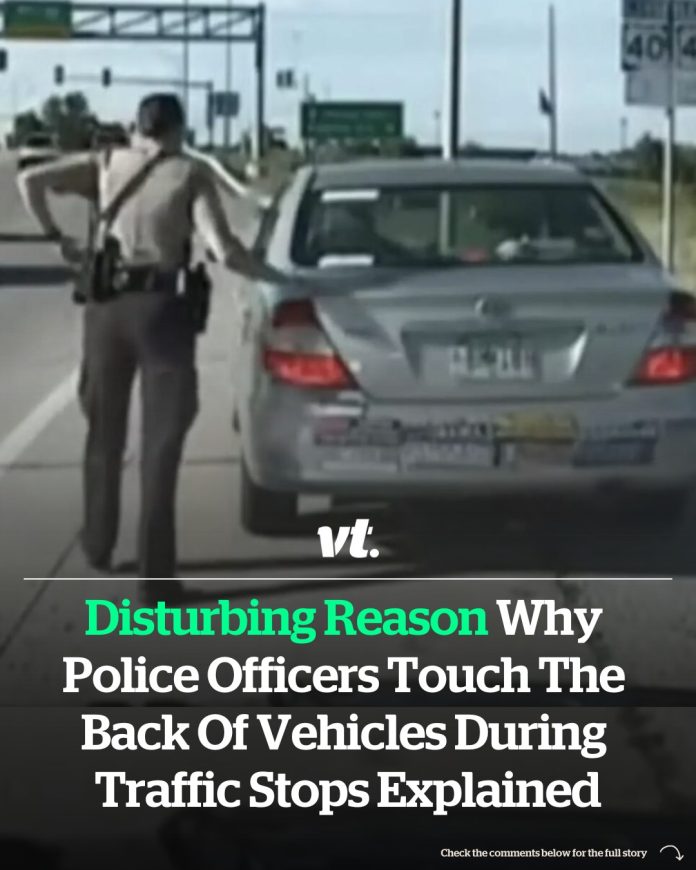During traffic stops, it’s not unusual to see police officers tap or press the rear of a vehicle especially near the taillight or trunk before approaching the driver’s window. Though it may look like a casual habit, this action serves strategic functions rooted in officer safety and investigative prudence.
Leaving a Trace in Case Things Turn Dangerous
One key reason officers touch the car is to leave their fingerprints on it. If a suspect were to drive off or something goes wrong, the presence of the officer’s prints would link them to that vehicle in subsequent investigations. This becomes especially important in cases where suspects attempt to flee or where a vehicle becomes part of a crime scene.

Securing the Trunk—and Ensuring Control
Another practical reason is to ensure that the trunk (or “boot”) is securely closed, preventing someone from hiding inside or using it to launch a surprise. It’s a subtle move that helps the officer maintain control and reduce potential threats from concealed threats.
Surprising the Driver to Assess Behavior
Tapping the tail light can also have a behavioral cue: the startle factor. That slight noise or unexpected contact may prompt the driver to pause or react—revealing signs of nervousness or suspicious movements that officers use to read the situation.
The Origins of a Routine
This practice has been part of police protocol for decades—built from recurring field experiences rather than formalized regulations. It’s taught in training as a safety measure, though critics point out that modern tools like body cams and vehicle cameras have reduced the need for physical evidence like fingerprints.
Context and Caution
Though useful, this gesture also draws criticism. Some argue it plays into a broader culture of “warrior policing,” where even routine traffic stops become fraught with tension and overly cautious behavior. In extreme cases, minor interactions have resulted in tragic outcomes when officers approach with a defensive mindset.
The New Yorker
What Drivers Can Expect
If you’re pulled over and see an officer touch your tail light or rear area, it’s likely not a sign of disrespect—it’s a safety protocol. Staying calm and cooperative is key: keep your hands visible, follow instructions, and understand that such gestures are often precautionary measures rather than personal.
How This Practice Benefits Officers and the Public
The simple act of touching the back of a vehicle offers more than just protection for officers—it also promotes safer interactions for everyone involved. By establishing a physical connection with the car, officers gain a moment to mentally prepare for what lies ahead, helping them stay alert and cautious during what can be unpredictable encounters. This increased vigilance can reduce the likelihood of misunderstandings or dangerous surprises. Moreover, the fingerprint left behind serves as an important safeguard. In situations where an officer’s actions during a traffic stop are later questioned, this subtle mark provides a clear record that they were present at the scene. This accountability helps maintain trust between law enforcement and the community.

Technology and Evolving Police Practices
While touching the car remains common, advancements like body cameras, dash cams, and vehicle sensors are beginning to complement or even replace some traditional methods. These technologies provide real-time documentation and can reduce reliance on physical evidence such as fingerprints. However, many officers still use the touch technique because it’s quick, reliable, and easy to perform in any situation.
Conclusion
As policing continues to evolve, balancing officer safety with respectful, community-oriented interactions remains a key goal. Simple gestures like tapping the back of a car may seem small, but they reflect a larger effort to navigate that balance effectively.

















